This elemental force is vividly, and at times devastatingly, captured in Kim Berman’s Remembering and Forgetting: Landscapes in Dialogue, on view at the UJ Art Gallery until Fri, Sep 12, 2025. The show, her first solo exhibition in 15 years, marks both the 20th anniversary of the University of Johannesburg and Berman’s final year after an extraordinary 31-year tenure shaping art education in Johannesburg and beyond.
“I don’t do things alone. As a printmaker, I am a collaborator. I do things in community and with friends and colleagues.” – Kim Berman

Fire runs like a living thread through Berman’s work. It is an element that has shaped her in ways both devastating and transformative. A recent blaze that gutted her study – its flames consuming her academic record, her books, and her photographs – mirrored the inferno of 2003 that tore through Artist Proof Studio in Newtown, claiming not only the space but also the life of co-founder Nhlanhla Xaba, who was sleeping on a couch at the time.
In both moments, loss and creation became inseparable, reigniting her enduring fascination with fire’s paradox: its power to destroy and to forge anew. “Smoke masks and reveals, chokes and beautifies,” she says. “Fire destroys. It also renews the earth.” A section of Berman's solo recreates the setting of her study, with burnt pages and the fragments of what was left.
Berman is a rare figure in the local creative community – an acclaimed printmaker, academic, activist, and co-founder of Artist Proof Studio, which in 2025 celebrates a milestone of having equipped more than 300 artists with professional skills. The alumni of Artist Proof Studio, which offers a heavily subsidised art education, reads like a who’s who of the South African art world – with names like Bambo Sibiya, Nelson Makamo, Nicholas Hlobo, and Philemon Hlongwane among them.
Soft-spoken and self-effacing in public, Berman nonetheless carries an outsized presence. Her influence is felt not only through her work, but through the hundreds of students and colleagues she has mentored.
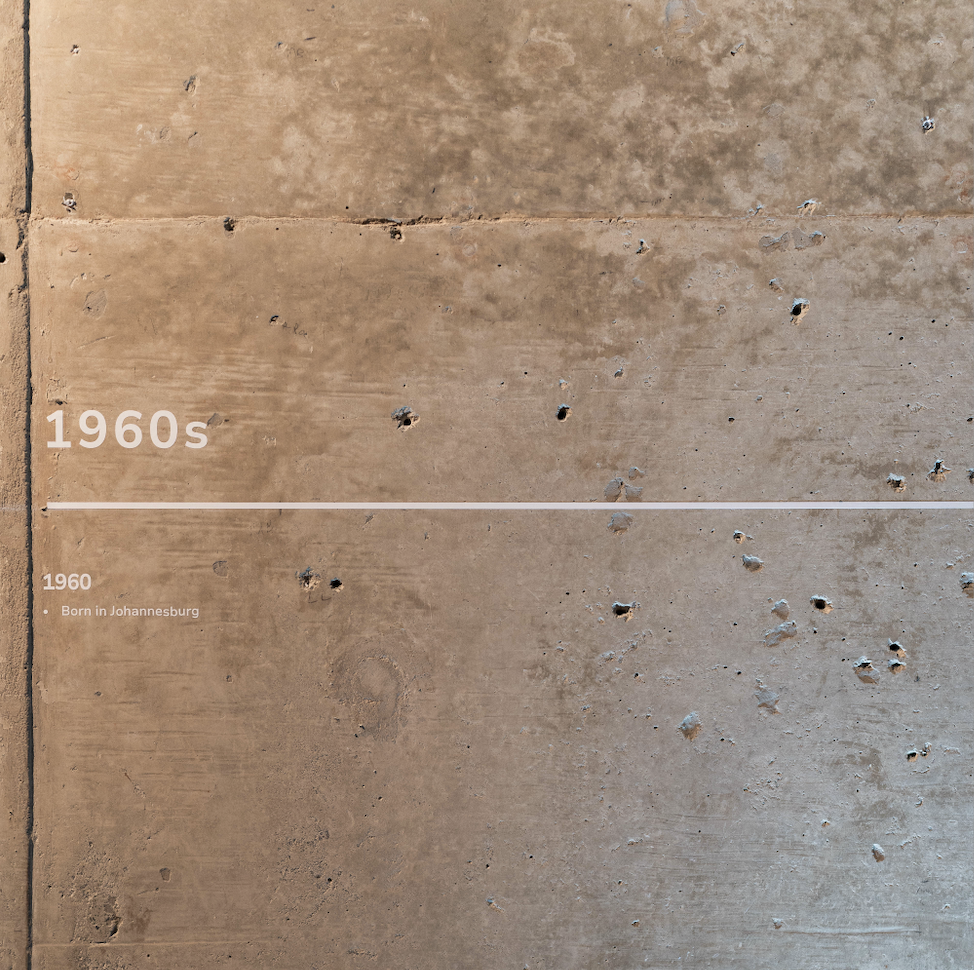
Remembering and Forgetting, in review
As you step into the gallery, a timeline unfurls across the wall, charting the pivotal moments of Berman’s life. Our favourite entry appears under the simple heading 1960s, bearing only one understated line: "1960. Born in Johannesburg." In both her work and her deep sense of community, Berman is quintessentially Joburg – her influence profound, her presence quietly assured.The first work displayed after that on a vivid rose-coloured wall immediately signals a sombre note. Titled Frontline it is a small piece – a body lying face down on the ground, its framing almost makes it seem as if it is weightless. And from there the gallery appears to cleverly unfold, through the use of colour on the walls, into different spaces where sections of the exhibition are beautifully displayed.
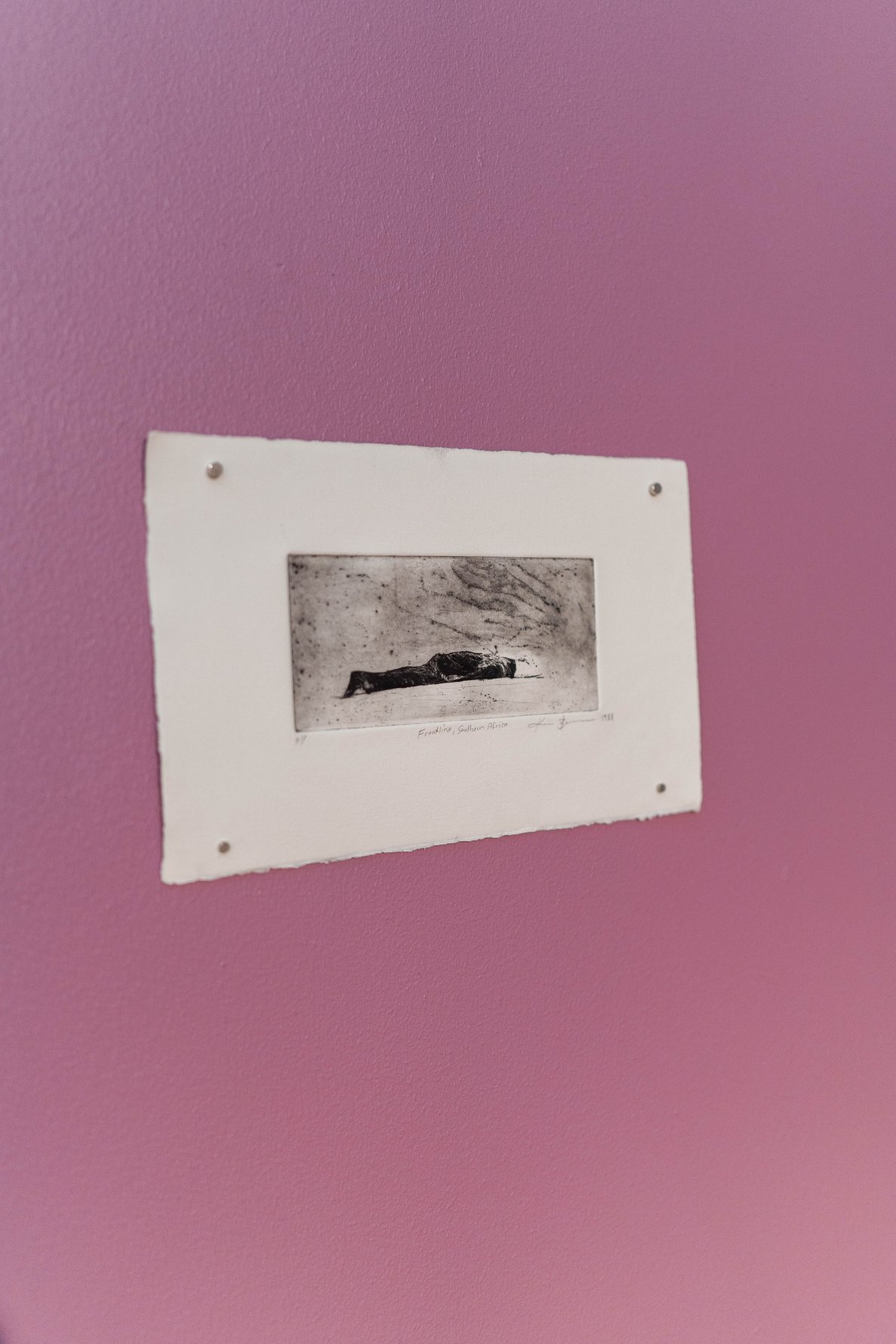
The exhibition takes the viewer on a journey of South Africa’s recent history, through some of its darkest moments – from mining to apartheid demons, the viciousness of vigilante killings and states of emergency to the twisted and wrecked truths unravelled by the Truth and Reconciliation commission. Then there is the reckoning with the Zama Zama miners, and the scarring of landscapes as if those scars are written on the body.
Unfolding across six overlapping themes – State of Urgency, Sunflowers in Mourning, Fire and Smoke, Mining and Damaged Landscapes, Artists Books, and Fire Revisited – these works revisit and reframe ideas that have followed Berman throughout her career: the traces of destruction, the persistence of renewal, and the paradoxes of landscapes that are both wounded and alive.
Central to this dialogue is her use of “rusted ghosts” – reclaimed etched plates, cut and re-used to link past and present. In these, foreboding traces of war and environmental damage give way to glimmers of light on the horizon, a stubborn insistence on hope. Fire is a recurring motif, but here it burns with new intensity.
Coaxing a solo show
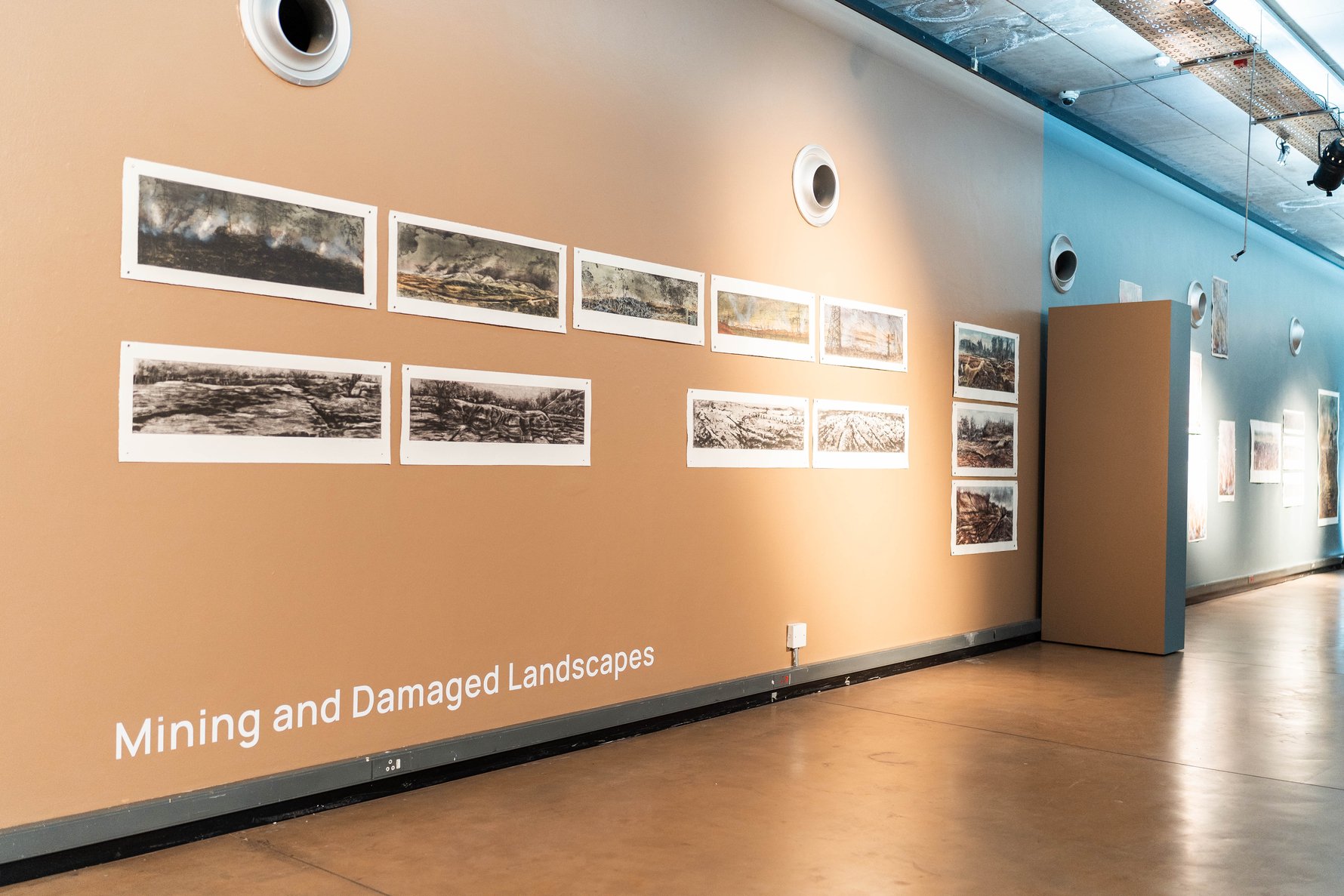
The opening night – the fullest the gallery has been in recent memory – brought together a youthful crowd, art luminaries, students, colleagues, and lifelong friends. The warmth in the room mirrored the deep admiration for Berman. Several noted that this exhibition had to be coaxed out of her, the result of encouragement from her partner, the gallery curator, the UJ art department, and notably artist, curator and UJ colleague, Gordon Froud, who persuaded her during a sabbatical last year.
“I don’t do things alone,” she said at the launch. “As a printmaker, I am a collaborator. I do things in community and with friends and colleagues.” Indeed, the work here is layered not just in image, but in relationships, histories, and acts of making that span decades.
The gallery walls – painted in fever greens, scorched earth tones, and warm colours – set the stage for a timeline of exquisite, fragile, yet unflinching works. Titles evoke destruction and renewal: Everything Ravaged, Everything Burned, Scorched Earth. Within these, the detail is extraordinary, the compositions alive with tracks, traces, and the colours of both devastation and rebirth.
Remembering and Forgetting is both a culmination and a threshold. It’s a reckoning with the past and an opening toward what comes next – for the artist, for the landscapes she conjures, and for the communities she has shaped. In this way, Berman has not only documented the cycles of fire, smoke, and regrowth; she has lived them.
Three standout works
There are so many works that stand out, but perhaps if one is forced to choose, these would be our picks.1. Fires of the Truth Commission (2000, Monotype)
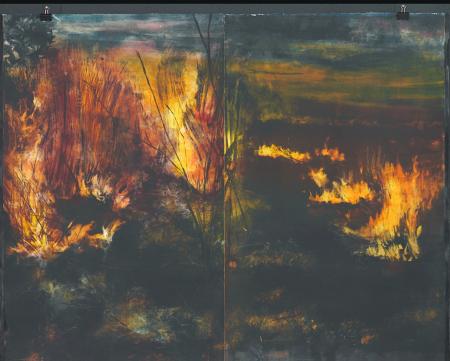
This is perhaps one of Berman’s most haunting bodies of work. The monotypes turn fire into both a political witness and a regenerative force. The plates are worked with painterly layers of ink, pulled through the press to produce smoke-soft gradients and flashes of embered orange. Her mastery lies in holding back just enough ink to let darkness dominate, then burning through it with thin seams of light along the horizon. This is printmaking at its most tactile – each pull a unique, unrepeatable record of scorched memory and fragile renewal.
2. Sunflowers in Mourning series (1993–2025, Etching Monoprint)
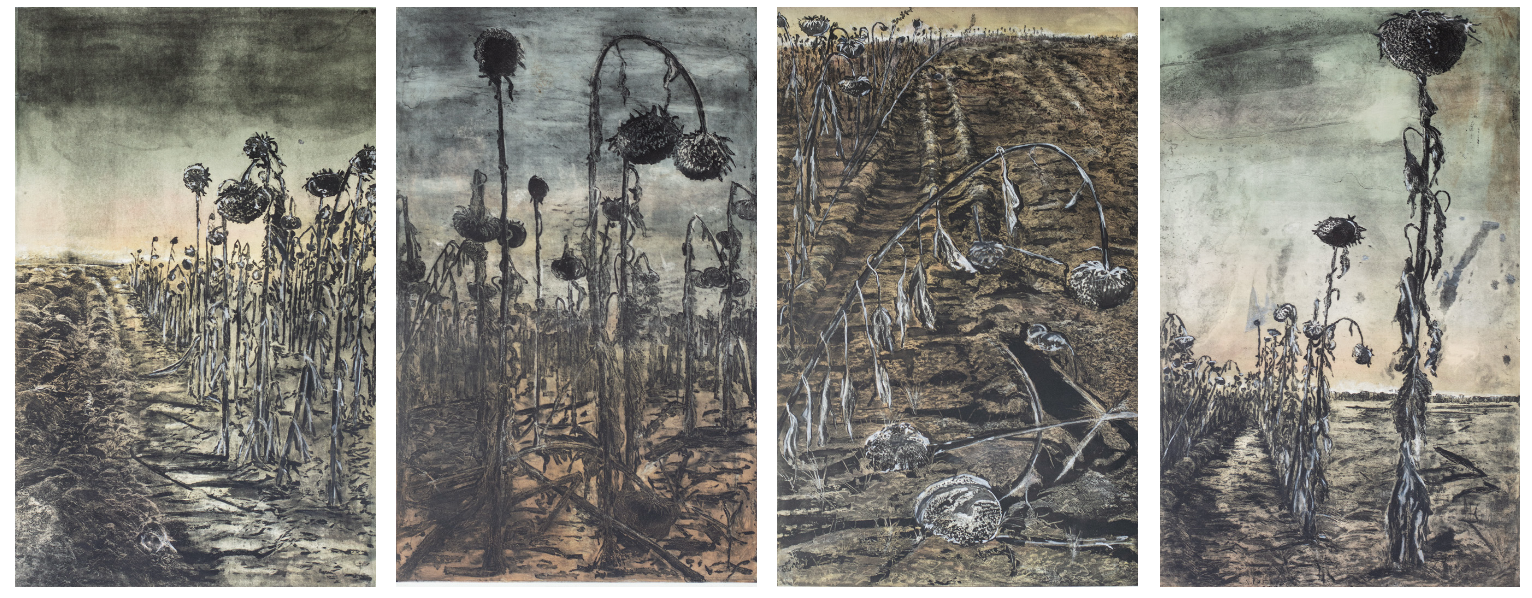
Berman takes the most cheerful of flowers and inverts its meaning. Bowed heads and rusted stems are etched into plates, then reworked over decades, sometimes with monotype colour, sometimes with hand-colouring. Earthy browns, ash greys, and smoke blues dominate, with occasional bursts of yellow or pink that seem almost indecently hopeful. In the press, her controlled wiping leaves ink caught in the burr of the drypoint lines, giving the petals and leaves a bruised, textured presence. These works reveal her ability to turn the medium into metaphor: each plate a survivor, carrying the marks of past states into the present.
In the catalogue produced for this exhibition, Senior Curator at the Goodman Gallery, and one of South Africa’s most respected exhibition makers and art advisors Neil Dundas writes: “Kim Berman’s use of the landscape made great use of metaphor in motif but always reflects the people. Her Sunflowers in Mourning prints were created during the height of the HIV /AIDS epidemic in South Africa when official policy affected women left behind in rural village areas. A middle generation had passed away in large numbers, with grandmothers left shouldering the responsibility of caring for their grandchildren, while mourning the passing of those who had no access to appropriate care. These prints are mourning and conversely also celebrating the women of those communities – still the backbone of the nation, the resilient carriers of the flag – having waited so long, still looking forward with hope for a new tomorrow.
3. Tracks (1999, Artist’s Book – Dry point & Monoprint on Handmade Paper)
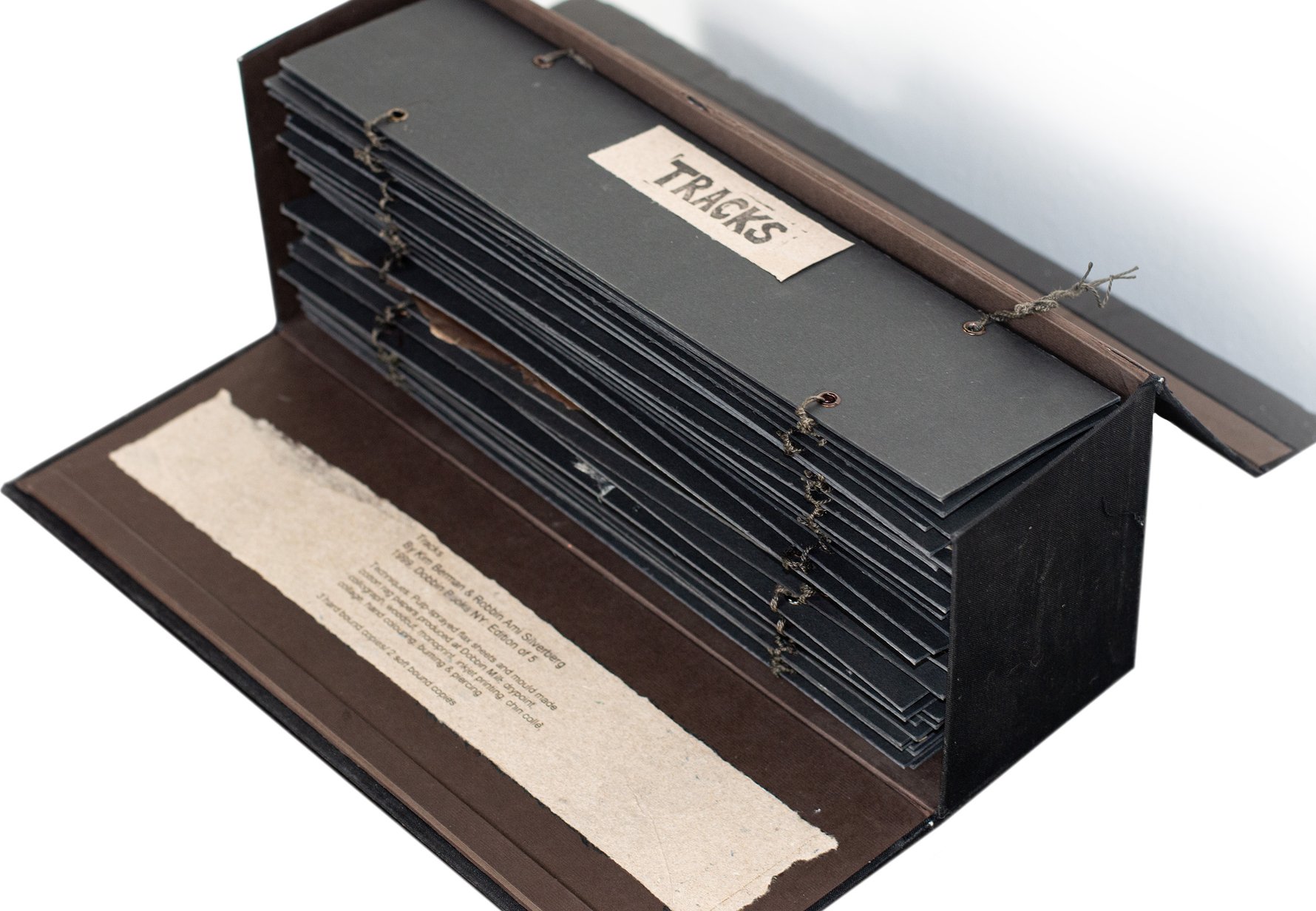
Berman's artist books are a thing of wonder, and many of them are displayed. You even get the opportunity to page through some of them. Among them, a collaboration with Robbin Ami Silverberg stood out with its concertina structure that transformed handmade paper into both a physical and metaphorical landscape. The sheets, embedded with fibres and detritus, become the terrain for Berman’s dry point marks and monoprinted sweeps of colour. The “tracks” – horizontally hung, are to be read as a landscape, and carry a sense of journey and memory, their muted palette interrupted by moments of sharp, almost metallic light. Here, her printmaking is inseparable from papermaking: the surface itself is part of the image, each embedded thread or fleck a trace of lived experience.
Deftly treading the line between devastation and renewal
Together, these works show why Berman’s landscapes are never just scenery. She uses the material itself to embody the push-pull between devastation and renewal, darkness and light. And at that, she has incredible mastery.Across the works, fire is never just an image – it’s in the very making. Plates are burned, scarred, and reclaimed; papers are embedded with fragments and ash; inks are wiped to let light push through darkness. In Fires of the Truth Commission, Sunflowers in Mourning, and Tracks, Berman turns her mediums into acts of witness and repair. The prints breathe smoke, the books carry the weight of scorched earth, and the colours hold the tension between loss and regeneration. In this way, Remembering and Forgetting is less an exhibition of landscapes than a series of fire cycles – each work a reminder that, from the charred remains, something new can take root.
Remembering and Forgetting: Landscapes in Dialogue runs at the UJ Art Gallery until Fri, Sep 12, 2025.


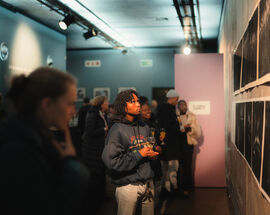
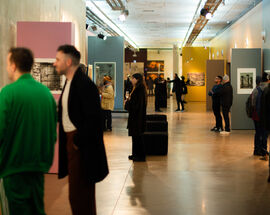
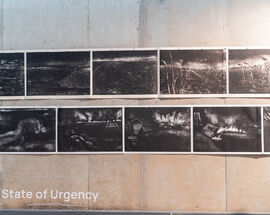


Comments